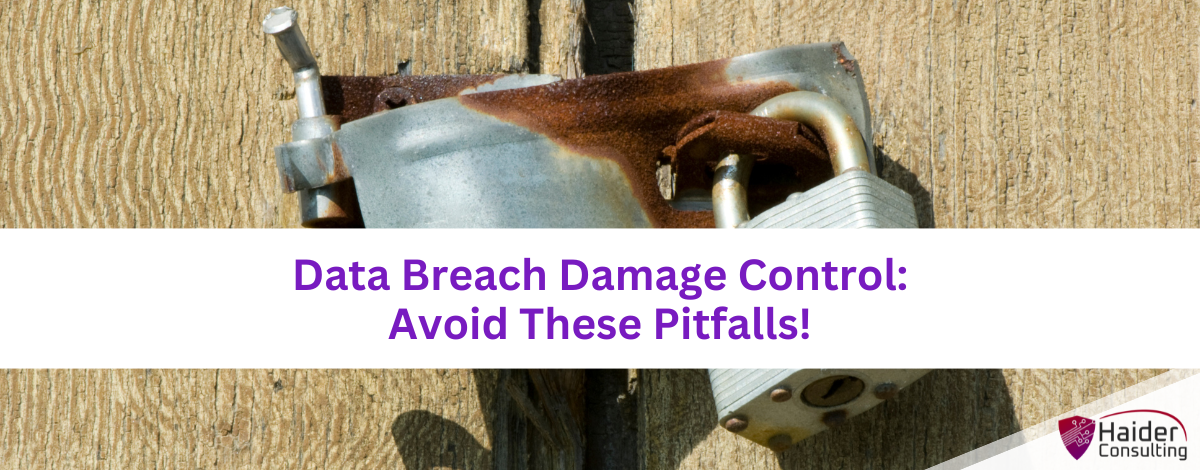Data breaches are a common problem for businesses big and small. Reacting quickly and correctly is crucial because it can affect a company’s reputation, finances, and legal issues.
Did you know? The average cost of a data breach is now $4.88 million!
To handle a data breach effectively, you need a good plan. However, there are common mistakes that can make things worse. This guide will walk you through the essential steps to manage a data breach and point out the mistakes to avoid to lessen the damage.
Pitfall #1: Delayed Response
Delaying the response to a data breach can be one of the most harmful mistakes a company can make. The longer the response time, the greater the potential damage and the higher the risk of additional data loss. This delay can also significantly reduce customer trust.
Act Quickly
Responding swiftly is critical when managing a data breach. Initiate your incident response plan immediately upon discovery. This plan should involve containing the breach, evaluating the impact, and informing those affected. Quick action can greatly reduce the overall damage.
Notify Stakeholders Promptly
It’s essential to quickly inform all stakeholders, including customers, employees, and partners. Delays can cause confusion and panic, worsening the situation. When notifying, clearly explain what happened, which data was affected, and what steps you’re taking to resolve the issue. This transparency helps preserve trust and allows everyone affected to take appropriate protective steps.
Engage Legal and Regulatory Authorities
For certain breaches, you must inform regulatory bodies. Postponing this can lead to legal problems. Make sure you understand and comply with the legal requirements for reporting breaches, and do so without delay.
Pitfall #2: Inadequate Communication
Effective communication is crucial during a data breach. However, poor or unclear communication can cause misunderstandings, frustration, and more damage to your reputation. The way you communicate with stakeholders during a crisis shapes how they view your company.
Establish Clear Communication Channels
Set up specific channels to keep stakeholders informed. Options might include:
- A dedicated hotline for questions.
- Email updates to share the latest developments.
- A specific area on your website for regular updates.
Make sure your communication is consistent, transparent, and accurate.
Avoid Jargon and Technical Language
Use simple language when talking to non-technical stakeholders. Your goal is to make the situation understandable for everyone. Clearly describe what happened, the steps you’re taking to fix the issue, and what actions they need to take.
Provide Regular Updates
Continue to provide updates as the situation progresses, even if there are no new developments. Regular communication reassures stakeholders that you are actively handling the situation.
Pitfall #3: Failing to Contain the Breach
Not containing a breach promptly is a major oversight. As soon as your business notices a breach, you must act fast to stop further data loss. Not doing so can lead to more extensive damage.
Isolate the Affected Systems
Your first move to contain a breach should be to isolate affected systems. You might need to:
- Disconnect systems from the network.
- Disable user accounts.
- Shut down specific services.
These actions help stop the breach from spreading.
Assess the Scope of the Breach
After containing the breach, figure out the extent of the damage. Determine which data was accessed, how the breach happened, and how much data was exposed. This information is essential for updating stakeholders and planning your next moves.
Deploy Remediation Measures
After understanding the breach’s scope, implement measures to fix the vulnerabilities used in the attack. Make sure your response addresses all issues to avoid future breaches.
Pitfall #4: Neglecting Legal and Regulatory Requirements
Ignoring legal and regulatory obligations can lead to serious penalties. Many places have strict laws about data protection that specify how companies must handle data breaches. Not following these rules can lead to heavy fines and legal issues.
Understand Your Legal Obligations
Make sure you know the legal and regulatory requirements relevant to your area. Learn about the deadlines for reporting breaches, the details you need to provide, and whom you must inform.
Document Your Response
It’s important to keep detailed records of how you handle a data breach. Your documentation should include:
- A timeline of the events.
- Actions taken to limit the breach.
- Communications with affected parties.
Good documentation can shield your company from legal challenges.
Pitfall #5: Overlooking the Human Element
The human aspect is often neglected in the response to a data breach. Human mistakes can lead to breaches, and the emotional toll on employees and customers is substantial. Addressing this element is crucial for a thorough response.
Support Affected Employees
If the breach compromised their data, support your employees by:
- Offering credit monitoring services
- Providing clear, consistent communication
- Addressing any of their concerns
Supporting your employees helps maintain morale and trust within your organization.
Address Customer Concerns
Customers may feel anxious and worried after a data breach. Respond to their concerns promptly and with empathy. Provide clear instructions on protective steps they can take and offer help where possible. A caring response can help preserve customer loyalty.
Learn from the Incident
Use the breach as a learning experience. Perform a thorough post-incident review to pinpoint what went wrong and how future incidents can be avoided. Implement training and awareness programs to educate your employees on data security best practices.
Manage Data Breaches with Help from a Trusted IT Professional
Handling data breaches is tough, and the quality of your response is crucial. Looking for reliable IT support? We can assist in preventing and managing breaches to minimize their impact.
Contact us today to discuss cybersecurity and how to keep your business running smoothly.
Book My 17-Minute Call





